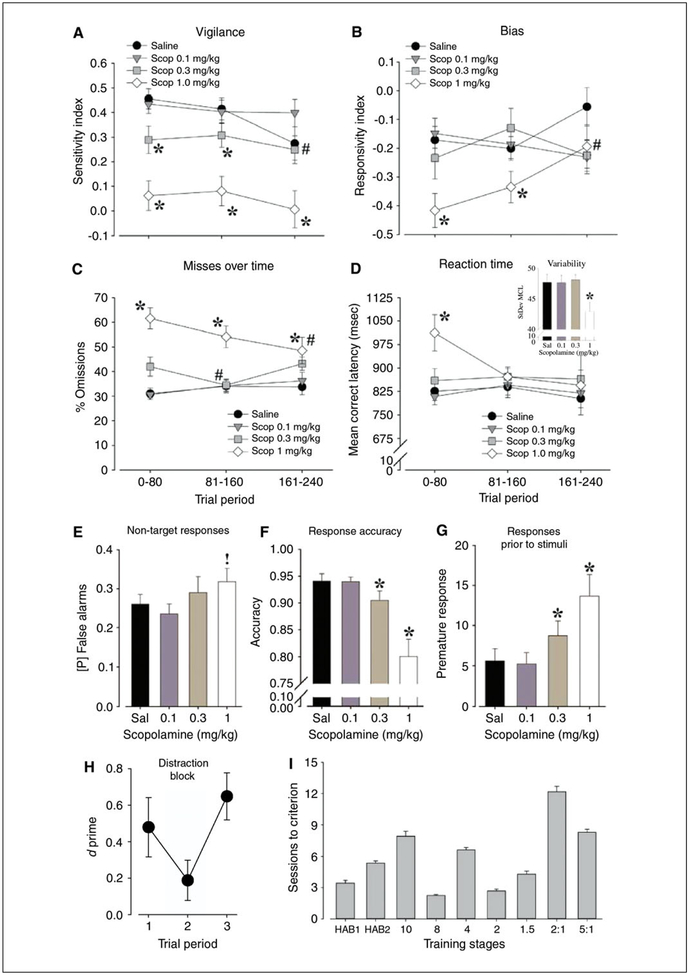Figure 9.56.6.
Anticipated results from 5C-CPT experiments. (A–G) Example data from an extended-session 5C-CPT challenge. Mice received one of three doses of the muscarinic acetylcholine receptor antagonist scopolamine. Scopolamine induced a dose-dependent decrease in sensitivity index (A), an initial decrease in responsivity (B-D), diminished accuracy (F), and increased premature responses (G). Data from Young et al. (2013b). (H) In a distracter challenge, a 1-Hz flashing light is presented above the five-hole array during the middle third of the block of trials (trial period 2), and the performance of mice in response to distraction is assessed. Typically, poorer performance is observed during such distraction. Data from Young et al. (2015). (I) Example of training data. C57BL/6J mice (n 58) were trained on HAB1, HAB2, and then 5CSRTT for 10, 8, 4, and 2 sec, followed by training = using 2–to–1 and 5–to–1 target to non-target stimulus ratios. The initial 10-sec 5CSRTT takes some time, given that previously a response in any lit hole would result in a reward (HAB2). The 2–to–1 and 5-to-1 training also takes some time, given the need to learn to inhibit the prepotent (target trial) response. *p < 0.05, !p < 0.1 compared with vehicle-treated mice; #p < 0.05 compared with trial period 1.

